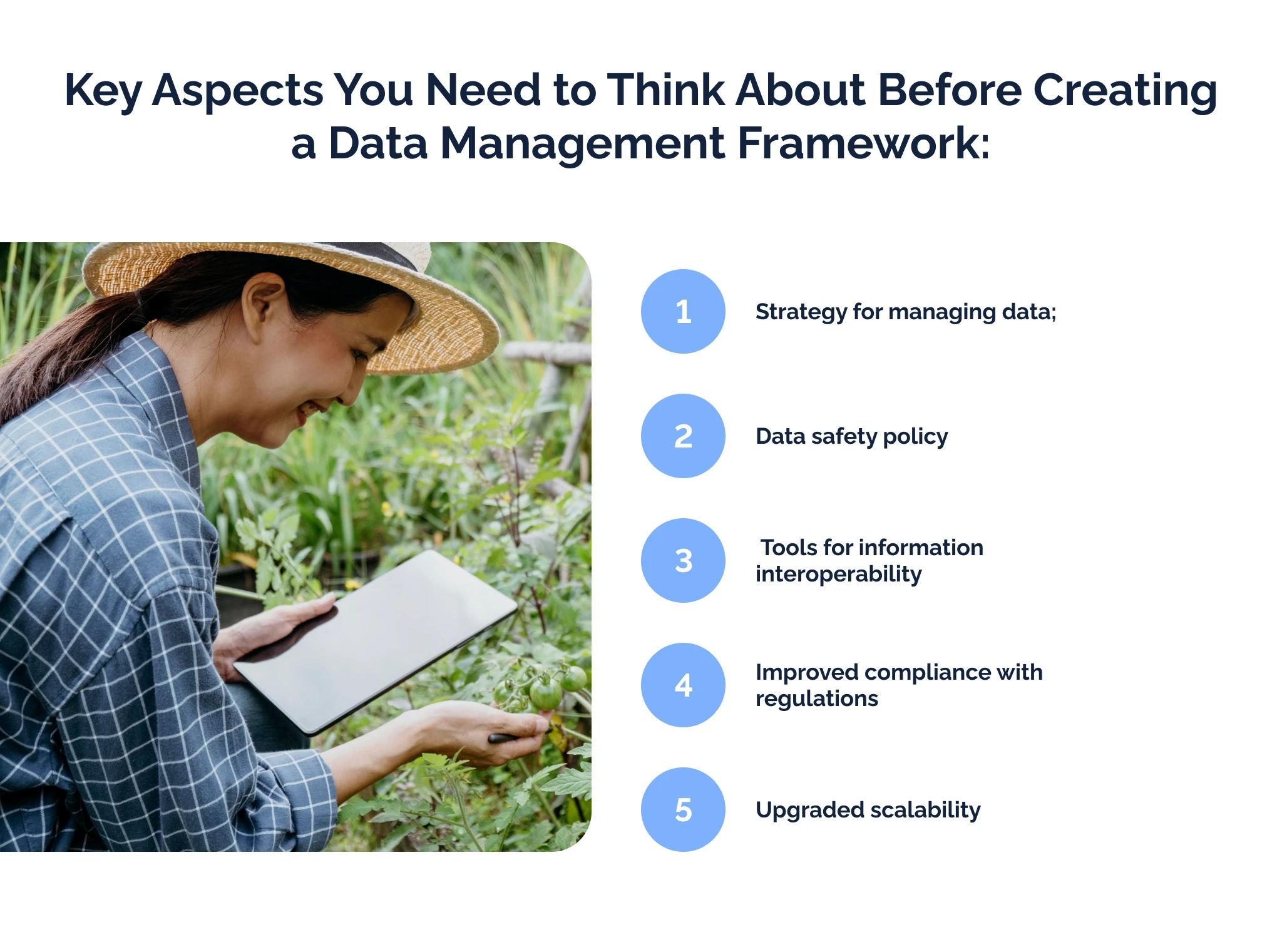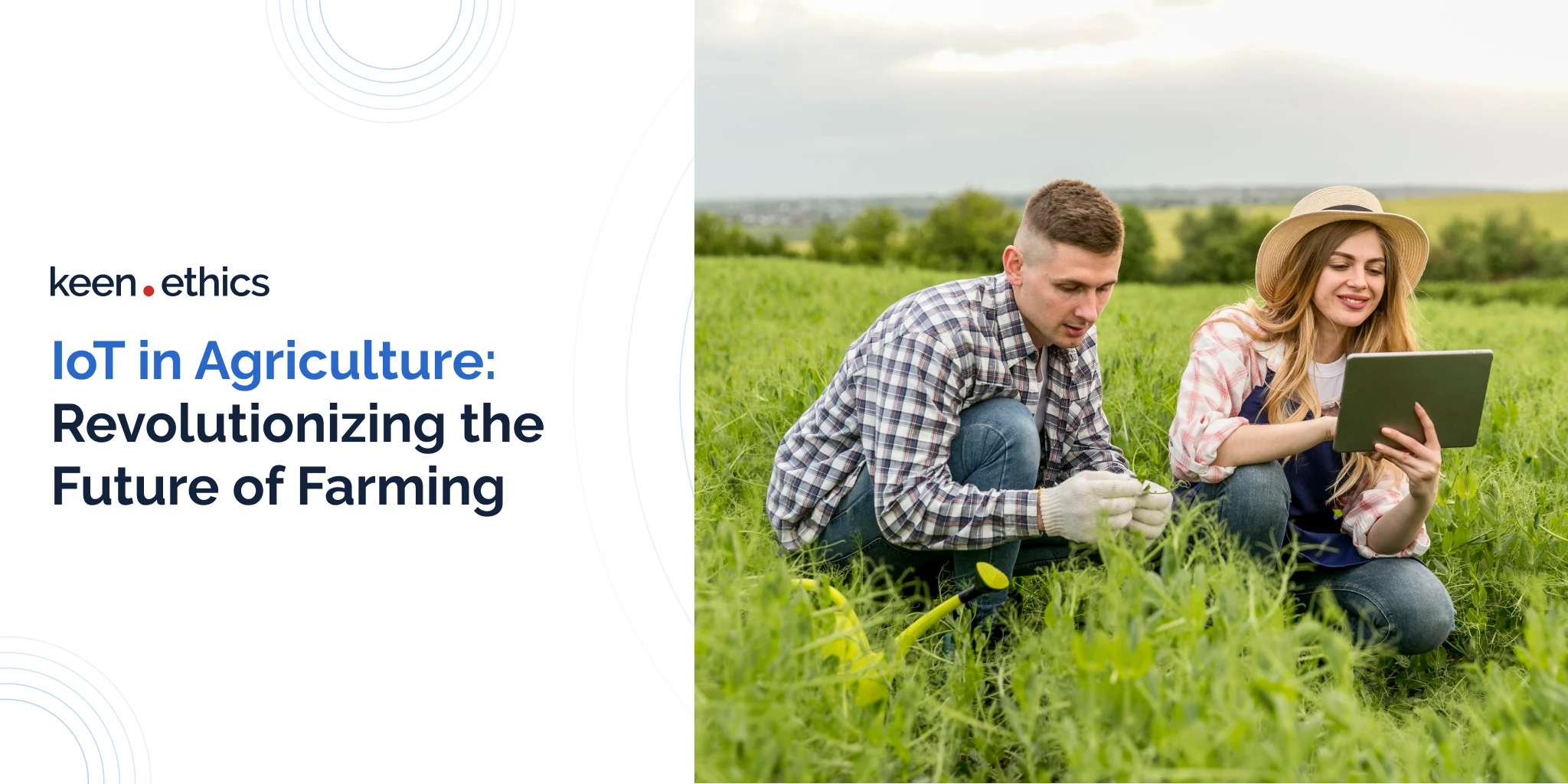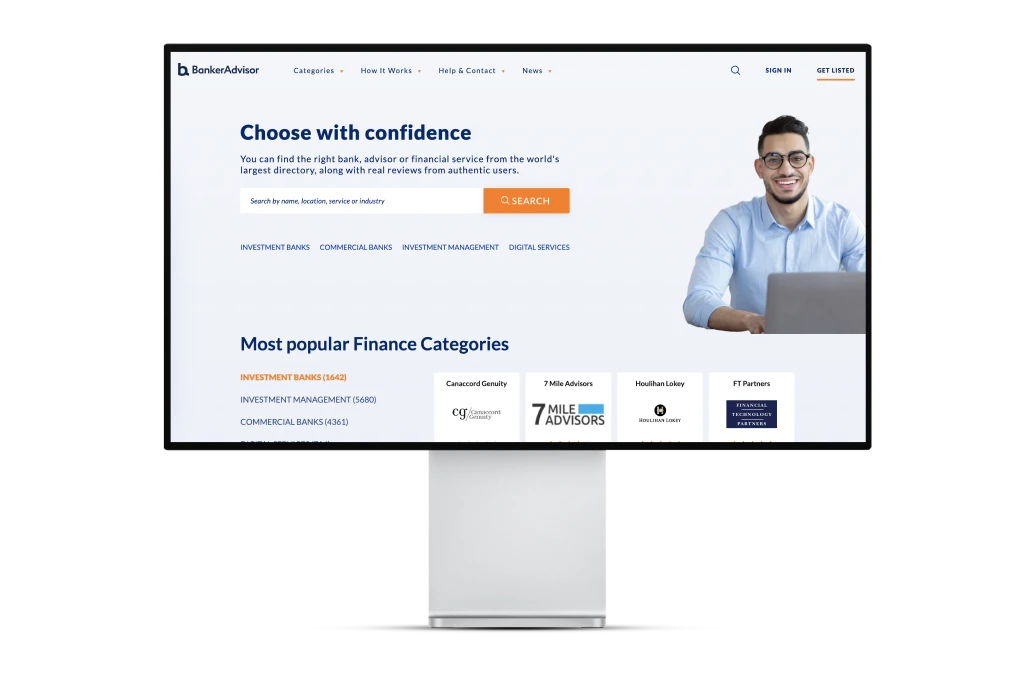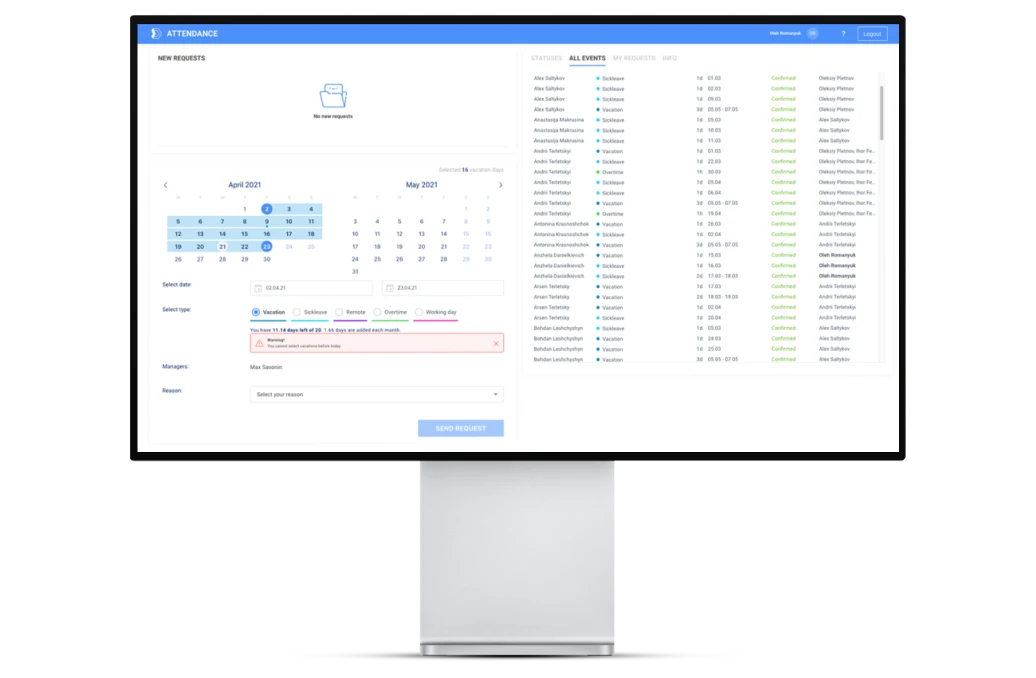Do you want to use IoT tools in agriculture? This article offers a definitive guide on this topic!
Technologies that help analyze crop health are essential for the agriculture industry. The healthier your crops are, the greater the ultimate capability of your firm to receive profits. In this review, we’ll look at the technology that can assist you with agriculture management, including crop health. This technology is IoT in agriculture. Current reports indicate that 80% of the existing agricultural companies on the market have already deployed some form of IoT agriculture software solutions. Thus, the goal of this article is to assist you with upgrading your capabilities with the help of new technology.
Smart Agriculture: How Can IoT Help You Make Your Farm Smart?

IoT is among the core components of a smart farm. A smart farm is a farm that has advanced tools for crop monitoring and, more importantly, data analytics. IoT devices represent a major part of a smart farm, data collection. For this reason, it’s not surprising that up to 80% of the companies in the agricultural industry use some form of IoT devices in their everyday functioning.
Agricultural IoT market size
Currently, IoT in agriculture is a massive sector with very significant incomes. Many companies are willing to invest in IoT sensors to make informed decisions. Statista reports that the global IoT market will reach a valuation of 13 billion US dollars by 2026. Most likely, the majority of companies in developing and developed countries will be using this technology to boost their productivity. Why is this information so vital for you? It indicates that the market is becoming saturated and, as a result, the solutions in it are becoming optimized in terms of the price-quality balance. Almost every farm can now look for feasible solutions in the sphere of IoT connected devices. Multiple optimal approaches are available based on different levels of resource availability.
How IoT influences agricultural companies
IoT in agriculture has an undoubtedly positive impact on the majority of the farms in the sector. Current needs of the agricultural specialists include the international expansion of their business, the ability to collect higher yields, and increased crop pricing. The relevant technology is more than capable of delivering on those goals. Firstly, IoT devices are sufficient to improve crop yields in most cases. Secondly, they’re notable for their capability to boost the quality of the crops by controlling nutrient levels and irrigation. Lastly, the combination of higher crop yields and quality can result in long-term improvements in the international market sales. Many countries are seeking to improve their nutrition levels, and the relevant technology is more than capable of delivering on this goal.
How Can One Apply IoT Technologies to Agriculture?
There are multiple ways to apply IoT technologies to agriculture. Here are some of the core ways to achieve your goals with the help of this technology:
1. Climate condition monitoring
Climate is among the most important aspects in the raising of all crops. In this regard, climate monitoring in an open field can help with adapting to new conditions rapidly. For this reason, you can set up a group of weather stations to achieve this goal. In turn, greenhouses depend on this technology even more because crop growth in them is fully under your control. This means that the technology in question enables you to maintain long-term control of the climate aimed at maximizing yields. Often, climate control is also crucial for keeping livestock in healthy conditions. In short, you have a wide set of conditions in which IoT applications in agriculture can assist your company.
2. Automating greenhouses
Greenhouses are an agriculture technology that is usually the most complex in terms of management. You have to track humidity and temperature personally and adjust them according to your knowledge. This factor creates a very high-pressure environment for the managers of the greenhouses because one mistake regarding weather conditions can ruin months of work on climate control. IoT in agriculture solves this problem once and for all, offering two major benefits. Firstly, it’s now possible to open multiple greenhouses because you can automate their management. Secondly, the pressure of making an error is much lower because current AI-driven systems are capable of detecting severe long-term problems.
3. Managing crops
Crop management is a highly complex task because it requires the knowledge of their biology and the core threats surrounding them. What’s the core problem with crop management these days? In our opinion, the difficulty of collecting sufficient information. Let’s take an example of some crop diseases. In many cases, agricultural companies learn about the spread of diseases only after they affect a significant number of crops. IoT systems that are spread sufficiently can detect diseases early on and, as a result, use those valuable insights to block the affected sector. In this light, IoT in agriculture is the best technology concerning the smart management of crops as it assists its users with a superior level of monitoring.
4. Managing livestock
Livestock management is a highly complex field for two reasons. Firstly, many companies work with large groups of cattle. This factor requires major labor costs if a business wants a sufficient level of livestock tracking. Secondly, this factor is further exacerbated by the extent of territories needed for facilitating grazing. IoT in agriculture removes this problem once and for all. It gives workers overseeing your cattle tools for tracking every animal through instruments like GPS and even cameras with access to the Internet. Moreover, modern devices can even track the vitals of the cattle to then offer insights on the nutrient levels your cattle may need. In this way, it’s possible to optimize the weight of your animals and guarantee their long-term health.
5. Promoting precision-based methods in farming

A major aspect of the success of IoT in agriculture is the use of precision-based methods in farming. In the past, farmers had to rely on the very general rules of raising crops or managing livestock. They were imprecise and led to rather significant losses of resources. Modern precision-based methods in farming resolve this problem by advancing information-oriented approaches to managing farms. Using advanced formulas, it’s possible to optimize your farm and make it as efficient as possible. Ultimately, we believe that this approach is facilitated further by the use of IoT. It can collect vital information and then transform it into long-term core insights for the relevant decision-makers. In short, it has never been so easy to make your farming techniques as precise as today.
6. Using drones in agriculture
Drones are a technology that can be of great assistance in agriculture. For instance, one may use a drone to review the movement of cattle. Among other vital IoT solutions is the ability to have full oversight of your farming facilities. In combination with artificial intelligence, this approach will assist you with finding crop diseases or locations where irrigation is insufficient. Many drones can be combined with various smart devices, which enable one to review the thermal characteristics of your field or analyze the movements of cattle.
7. Advancing predictive analytics in agriculture
Real-time monitoring is vital not only because it enables various companies to quickly react to various negative events. This technology also enables you to collect enough information for making long-term predictions. What do we mean by this? One can use information from IoT devices to build a model of your farm. This model, in turn, should be sufficient to predict various events that will occur in it in the future. Using predictive analytics, you’ll be able to analyze how one or another decision will improve your crop yields or, instead, decrease them. One of the most dangerous agricultural operations is the change of crops in your fields. With the help of modeling and predictive analytics, one can quickly see the operational costs of such decisions.
8. Enabling all-encompassing (end-to-end) management solutions
The output of a farm doesn’t solely depend on what is done within it. In many cases, the operational business processes play a major role in the yields, too. For instance, transformations in the market can push a company in the agricultural sector to consider a different crop. In this light, a rational choice to consider is the usage of all-encompassing management solutions for agriculture. These solutions can help you see the outcome of all decisions in your business instead of encountering some unexpected changes due to minor changes in your product sales department, for example. IoT devices play a major role in this approach: they collect vital information that can have a long-term transformative impact.
9. Promoting robot usage
Lastly, agriculture facilities are likely to be among the core benefactors of automation. In this regard, modern agriculture will see major investments into robot usage. For instance, it’s possible to use robots to collect various crops. IoT in agriculture is a technology that enables the usage of such robots. A robot equipped with an IoT device can be controlled via the Internet and transmit data in an automatic mode. Consequently, your firm can try to create a whole fleet of these devices to remove reliance on the human workforce. Instead, it’ll be possible to transfer the majority of the workers to the more complex tasks like data analysis or even genetic selection of crops.
Core Benefits of Using IoT Devices in Agriculture
There are multiple benefits to using smart agriculture solutions like IoT. Here are the core advantages your company in the agriculture sector will get if it decides to install such a solution:
- Improved data collection. The first reason to use IoT in agriculture is the ability to collect tremendous volumes of information about various farms. Using real-time data, you’ll then be able to modify your management approaches by upgrading soil analysis, for example. The most efficient farms are always data-driven: they’re centered around collecting high-quality insights from their operations.
- Optimized resource usage. Information collection through technologies like IoT for agriculture also enables you to understand if you waste certain resources. For instance, you may be using too much water in your greenhouse. An IoT system connected to artificial intelligence will be able to quickly detect the problems of this kind. Consequently, another major motivation to install this technology is the capability to maximize the positive impacts of resource usage in your firm.
- Full control over the production process. In traditional farming systems, information is often fragmented. For example, you can’t observe your animals all the time. IoT devices resolve this problem once and for all. Using robotics tools, one can both track everything and then make automatic interventions possible. Hence, IoT devices are among the best ways to maximize control over your farms in the long-term scenarios.
- Efficient waste prevention. Similarly to the preceding advantages, IoT tools combined with AI are also capable of showing you where your company wastes resources, for instance. This information may then be used to improve soil conditions despite the usage of a smaller number of vital resources.
- Process automation. Automation is among the core benefits of modern technological advancements. IoT for agriculture enables companies to automate many processes through the usage of advanced artificial intelligence. You can create complex scenarios according to which your device will control pests and maintain proper irrigation to maximize crop quality. What are the best ways to ensure process automation? We recommend combining hardware and software.
Key Aspects You Need to Think About Before Creating a Data Management Framework

1. Strategy for managing data
The first thing you need to actively consider is your strategy for managing data. It’s not enough to install smart farming technology in your business. You also need to know why you require this technology in the first place. What improvements do you expect to achieve with its help? IoT devices aren’t cheap: thus, you need to know why you require them and what data-driven decisions they’ll enable.
2. Data safety policy
Typically, IoT devices don’t collect personal information in the agriculture field. Nonetheless, the leak of data from your IoT for agriculture can result in significant damage to your business. For instance, the competitors will have a clear understanding of your upcoming plans on the market. Using this data, they’ll be able to create a strategy that will counter your activities. Considering this data, it’s crucial to harden smart farming technology with frameworks that guarantee data security. For example, you can use two-factor authentication or technologies for data encryption. A viable option is to also invest in the training of your core workers regarding the best data safety approaches.
3. Tools for information interoperability
Many farms are already using various types of software to drive their business. In this light, a major factor you need to consider is the investment into interoperability. For example, a good idea is to connect your accounting tools with IoT devices and the corresponding AI solutions. In this way, you’ll be able to spread the benefits of machine learning across multiple dimensions at the same time. Thus, interoperability will ensure that your company is capable of maximizing not only the positive impacts of IoT but of all solutions in your firm at the same time.
4. Improved compliance with regulations
Among the core uses of IoT in agriculture is also improved compliance with regulations. The modern agricultural sector encounters rather significant demands from the local governments when it comes to its management. In this light, you may encounter environmental and food safety demands. Ultimately, we believe that IoT devices enable firms to better react to those demands. The reasoning here is simple: you obtain more information through an average IoT device. This, in turn, allows you to find gaps in your existing approach to agricultural management.
5. Upgraded scalability
A typical farm without IoT is often limited by the availability of the workforce on the market. Urbanization continues to be a major process and, as a result, fewer and fewer people are available in terms of employment. This information means that the best way to scale a farm is to invest in labor-saving technologies. Scalability, therefore, becomes one of the core applications of IoT in agriculture. If you want to expand the outreach of your farm, you should actively think about IoT devices, which often allow one person to manage multiple locations at the same time.
The Future of IoT in Agriculture

IoT in agriculture is likely to become a mainstream trend in the upcoming years. Here, we expect two major improvements from this technology. On the one hand, we believe that IoT in agriculture will be much more available financially. The technology in question is becoming increasingly cheaper. On the other hand, we believe that it’ll also see major improvements in its long-term productivity. Where will those improvements come from? Primarily, from the major investments into artificial intelligence, which will manage to capitalize on the tremendous amounts of information collected by this technology. In the future, many decision-makers will be able to combine their IoT devices with artificial intelligence. The result will be a tremendous improvement in the decision-making powers of the involved businesses.
Why Hire Keenethics as an Agricultural Software Development Company?
We believe that our company, Keenethics, is a perfect partner for agricultural software development goals. Firstly, our team has experience in the agricultural field with projects like My Grass Growth. Secondly, we have extensive knowledge of IoT app development due to our cooperation with various manufacturing companies. Lastly, Keenethics has completed many projects over its eight years of presence on the market. As a result, we’re capable of adapting to a diverse set of requirements due to working with companies in fields like finance, manufacturing, and education. Our experts combine both relevant experience in agriculture and the more general knowledge of software development.
Summary

All in all, we believe that the usage of IoT frameworks in your business is among the best ways to upgrade agricultural operations. These devices help collect data and lower long-term costs. Up to 80% of the companies on the market are already using this technology. Consequently, it’s a rational choice to invest in IoT too and, more importantly, to think about the ways to get additional positive benefits from this technology by investing in improvements such as artificial intelligence.
FAQ
What does IoT-enabled Smart Agriculture mean?
In what manner is IoT implemented in the field of agriculture?
Usually, it’s implemented through a combination of IoT agriculture devices coupled with a connection to AI technologies. For instance, you can use a smart collar with IoT functions to send information about the heart rates of your animals to the central servers. In turn, those central servers will enable you to analyze the long-term health of your cattle.
What benefits does IoT for agriculture bring?
In our opinion, you should look for the following improvements in your operations with the help of IoT agriculture technology:
• Improving crop monitoring;
• Promoting efficient use of resources.
• Increasing long-term crop yields;
• Detecting crop diseases on time;
• Upgrading livestock management in your firm;
• Reducing labor costs;
• Increasing farm safety.
What are the core benefits of IoT for the future of agriculture?
Modern IoT has multiple long-term benefits for the future of agriculture. Here are some of those core benefits:
• Enabling and promoting precision agriculture
• Optimizing resource usage
• Automating crop monitoring
• Enabling automatic livestock monitoring.
• Promoting efficient supply chain management
What challenges of implementing IoT exist and how to overcome them?
Core Challenges:
• Security concerns regarding data safety
• Challenges regarding the integration into other systems
• The issue of ensuring proper data management and analysis
• Potentially high costs of implementing the relevant solutions
• The need to invest in long-term training of the workforce
Ways to Overcome the Relevant Challenges:
• Investing in high-quality security measures
• Coming up with a clear strategy for integration
• Purchasing data analytics tools and hiring relevant experts
• Performing cost-benefit analysis before the implementation of a solution
• Providing training opportunities for the core employees
Keenethics experts can help you with this goal!
 Search
Search













